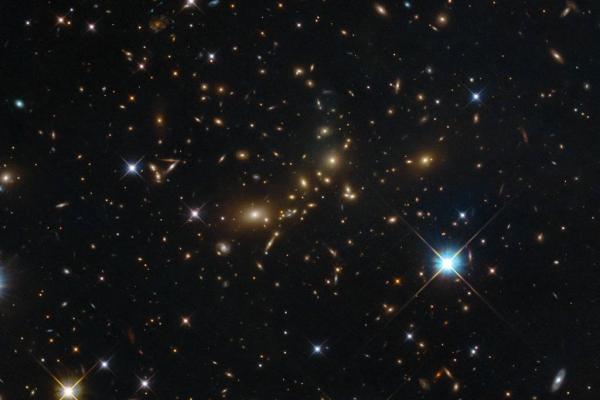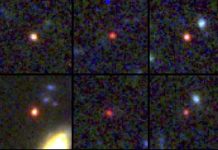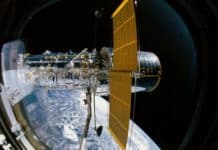
April 16 (UPI) — A new image from the Hubble Space Telescope showcases a massive galaxy cluster, a web of thousands of galaxies tied together by the tug of gravity.
The galaxy cluster featured in the image is named PLCK G308.3-20.2. Like an ecosystem full of biodiversity, the cluster is home to a wide range of galaxies — all different types, shapes and sizes.
This particular galaxy cluster is situated 5 billion light-years away from Earth.
As recently as a few decades ago, astronomers thought galaxy clusters were the largest structures in the universe, but in the 1980s, scientists realized galaxy clusters were organized into structures called superclusters.
Superclusters are made of groups of clusters that can stretch hundreds of millions of light-years across. Some superclusters cover as much as 5 percent of the observable universe. Unlike galactic clusters, superclusters are organized by gravity.
They’re defined by their spatial distribution. Galaxies and galaxy clusters aren’t evenly distributed in the universe, but exist in groupings that can offer clues about the early conditions and evolution of the universe.
In addition to gravity, galaxy clusters are also linked by strands of superheated plasma called intracluster medium. The plasma can be found stretching from one galaxy to another. In fact, the most luminous matter in galaxy clusters is located in the intracluster medium. However, emissions take the form of X-rays, making the medium invisible to the naked eye.
As is the case in almost all galaxies, the majority of the matter found in clusters is dark matter. Its presence is only revealed by its gravitational influence. Scientists did, however, recently find a galaxy with almost no dark matter — a rarity.
The new Hubble image was captured by the telescope’s Advanced Camera for Surveys and Wide Field Camera 3 as part of the Reionization Lensing Cluster Survey.
PLCK G308.3-20.2 was one of 41 giant galaxy clusters observed by Hubble. The RELICS program was created to identify bright galactic targets in the distant universe for followup studies using the James Webb Telescope, scheduled to launch in May 2020.





